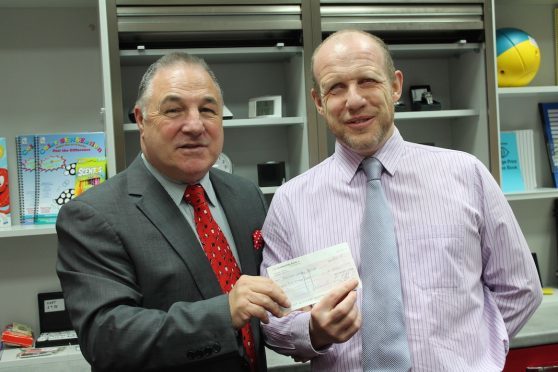Graham Findlay, Chief Executive for North East Sensory Services, looks back on a challenging year for the third sector.
The UK-wide recession in 2008/9 was widely documented as a difficult time for charities. Not only did many people reduce the amount of money they gave to the third sector, the number of volunteers declined and many charities were dealing with an increasing number of clients.
As a decline in oil prices continues to present challenges in the North-east and large-scale layoffs take place in Aberdeen, charities across the region have seen an increasingly demanding situation when it comes to donations.
Historically local businesses and Aberdonians have been extremely generous towards local charities, but the last couple of years have seen corporate fund-raising in particular decline. As oil and gas companies face severe cutbacks, charitable giving is often one of the first to go.
In 2012, the Charities Aid Foundation and the National Council for Voluntary Organisations warned that charities were facing a ‘deeply worrying’ financial situation due to the economic downturn. Locally, previously successful fund-raising events have struggled to sell out and, over the last couple of years, many local charities have been forced to cancel events.
On a brighter note, Scots are more generous than people in the rest of the union. In 2013, the average Scot gave £356 to charity each year – a third more than Londoners.
The third sector is vital to our communities. Charities are not a luxury to enjoy when times are good. Charities, social enterprises, social groups all make a direct impact on the growth of Scotland’s economy, the wellbeing of its citizens and the improvement of its public services. North East Sensory Services (NESS) works in partnership with local authorities to provide vital services to visually and/or hearing impaired people in the North East. The services we provide – social work, rehabilitation, advice about mobility, communication and living skills support – are vital to the lives of our service users. In addition, NESS provides a wide range of ‘added value’ services including a library service, a gym and a young people’s service, which are fully funded from charitable giving.
At NESS, we have an open door to our service users, who can pop in for help with their specialist equipment to help them live more independently, advice on using adapted information technology, or to learn lip-reading. The donations we receive are our lifeblood.
When times are tough – which they undoubtedly are – I would urge you to reflect on those for whom, without the specialist support of charities like NESS, life is particularly challenging.
A new year always comes with new hope, and at North East Sensory Services we hope that our Aberdonian resilience will continue and we will ride the storm. Let’s stick together as a community and look forward to many years of prosperity once again.
